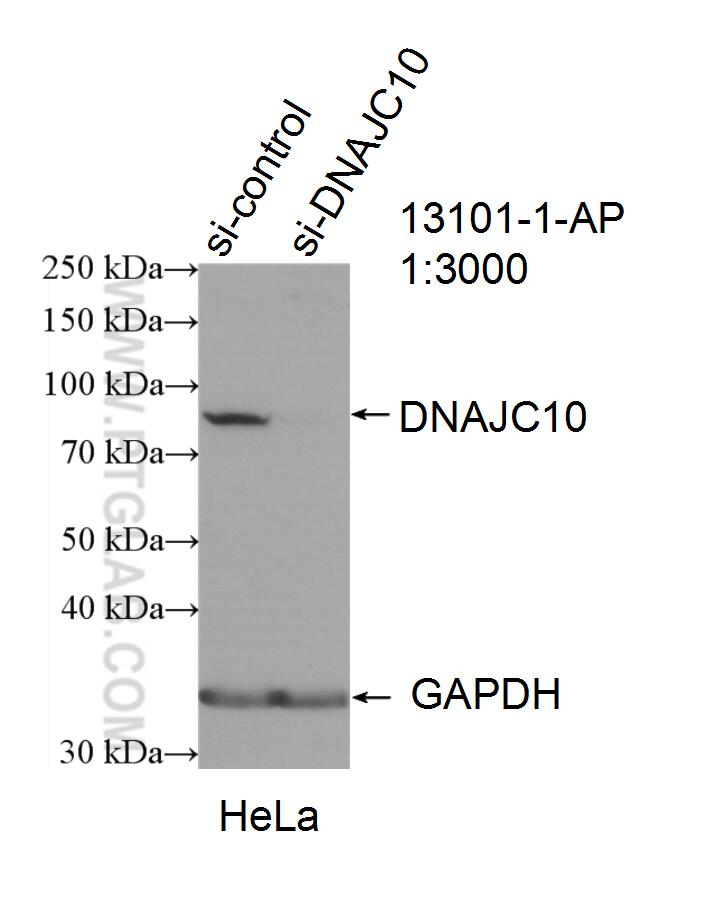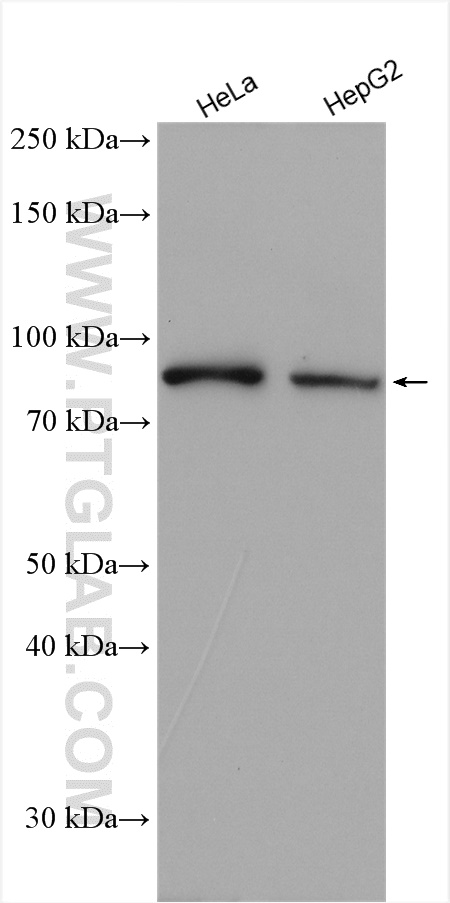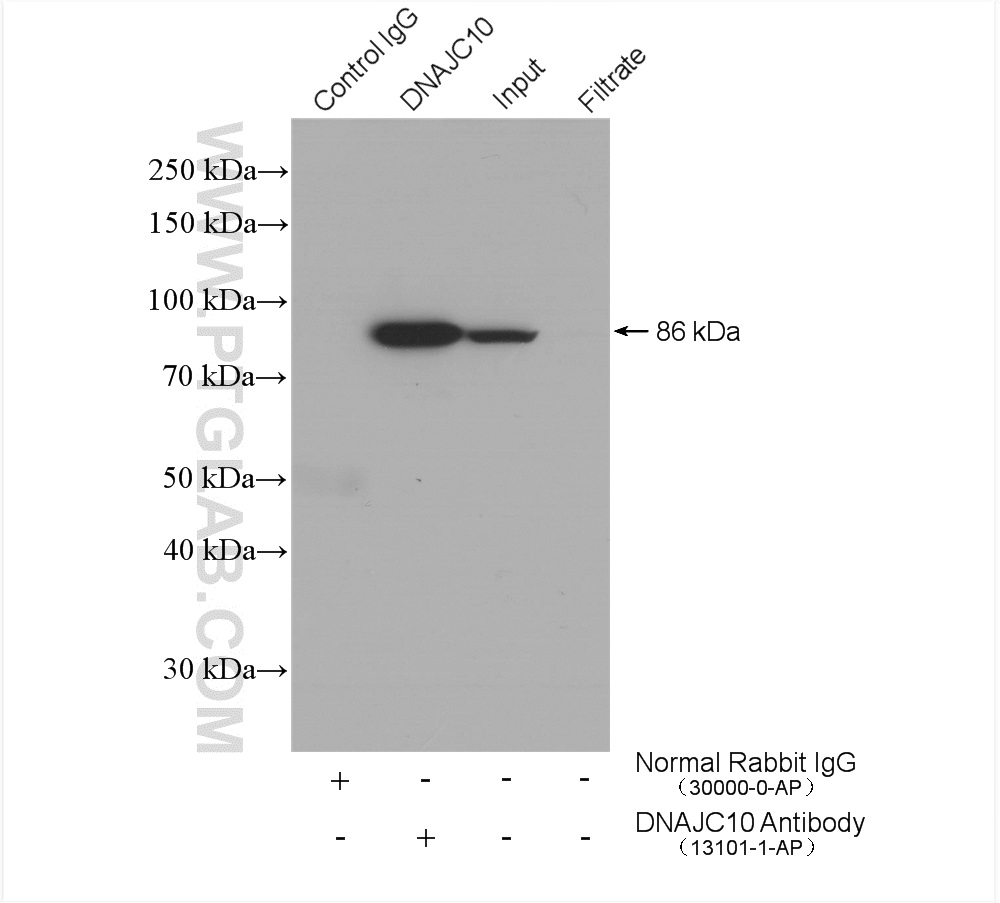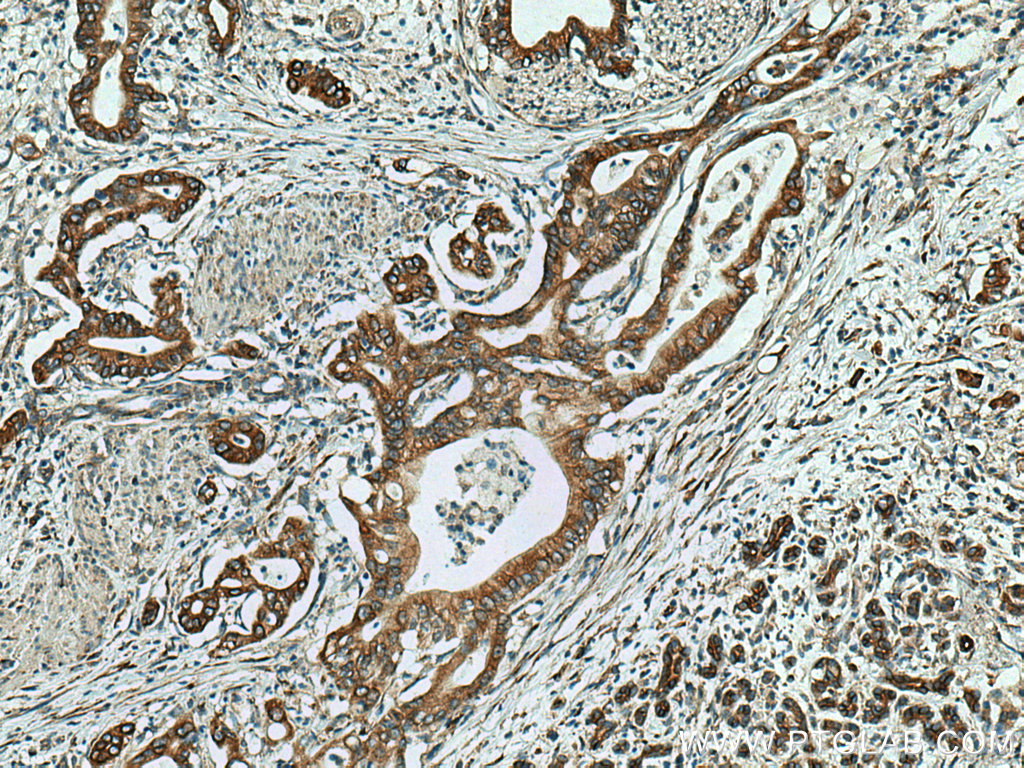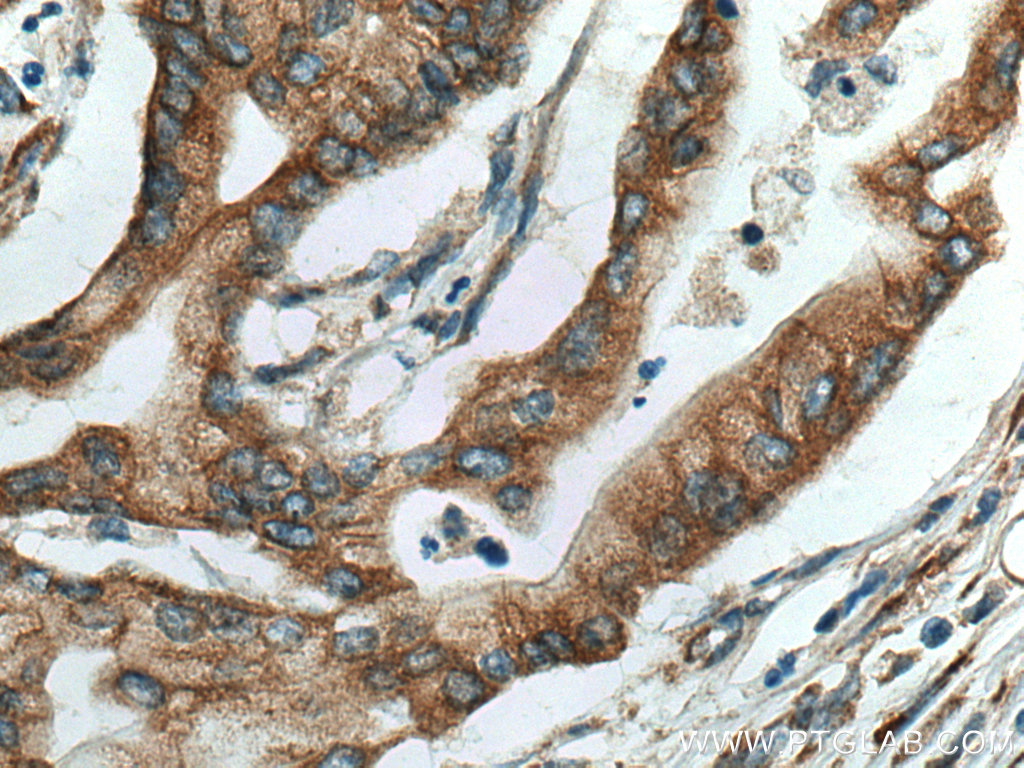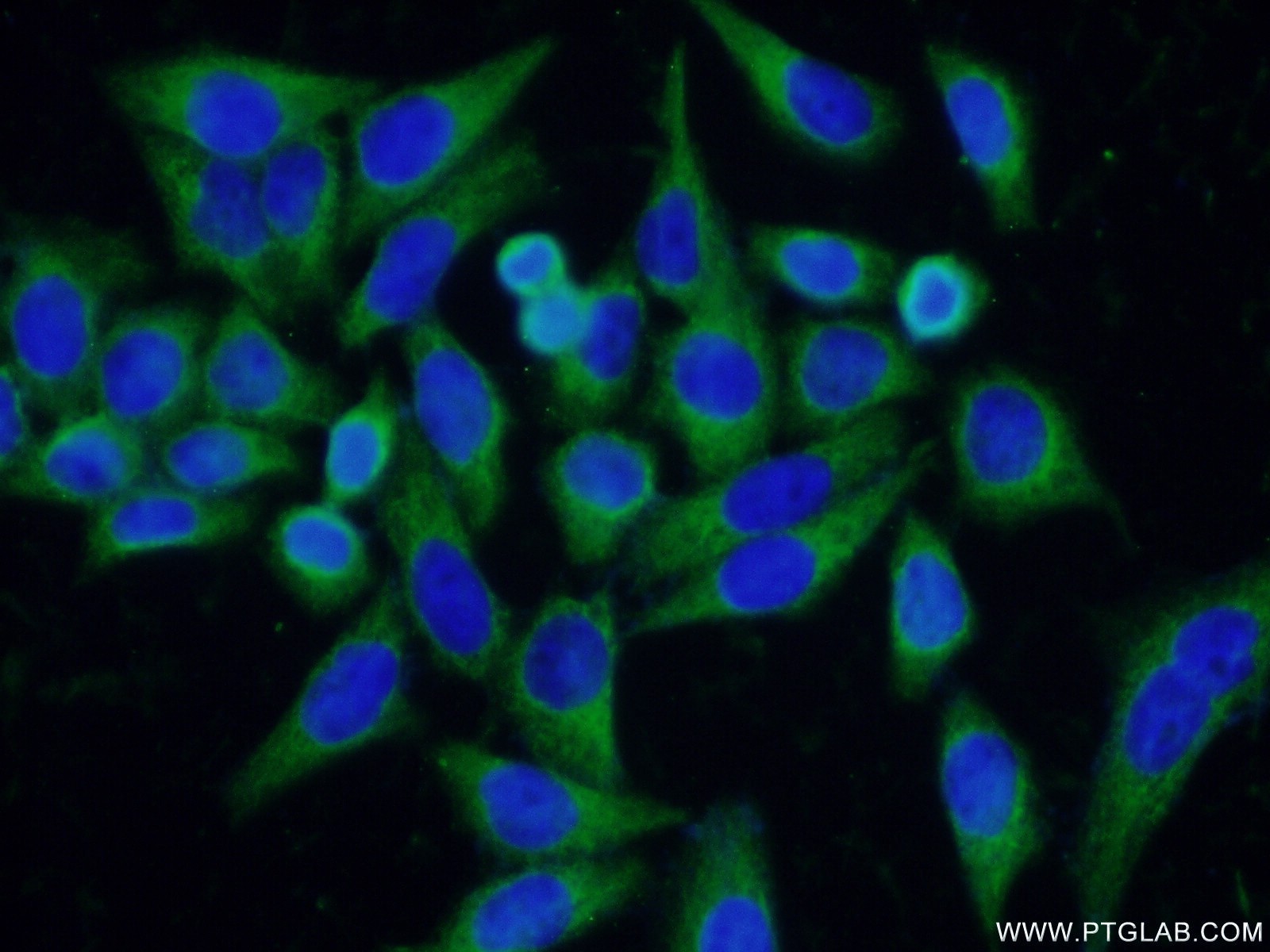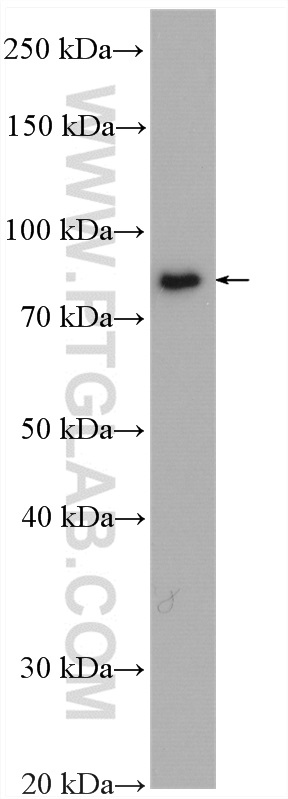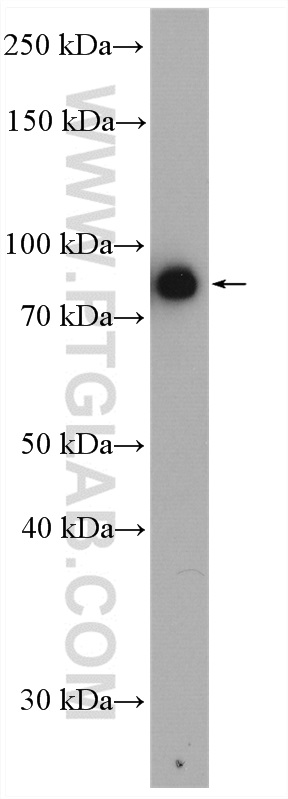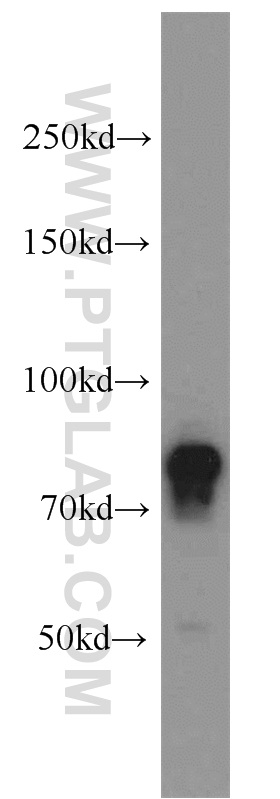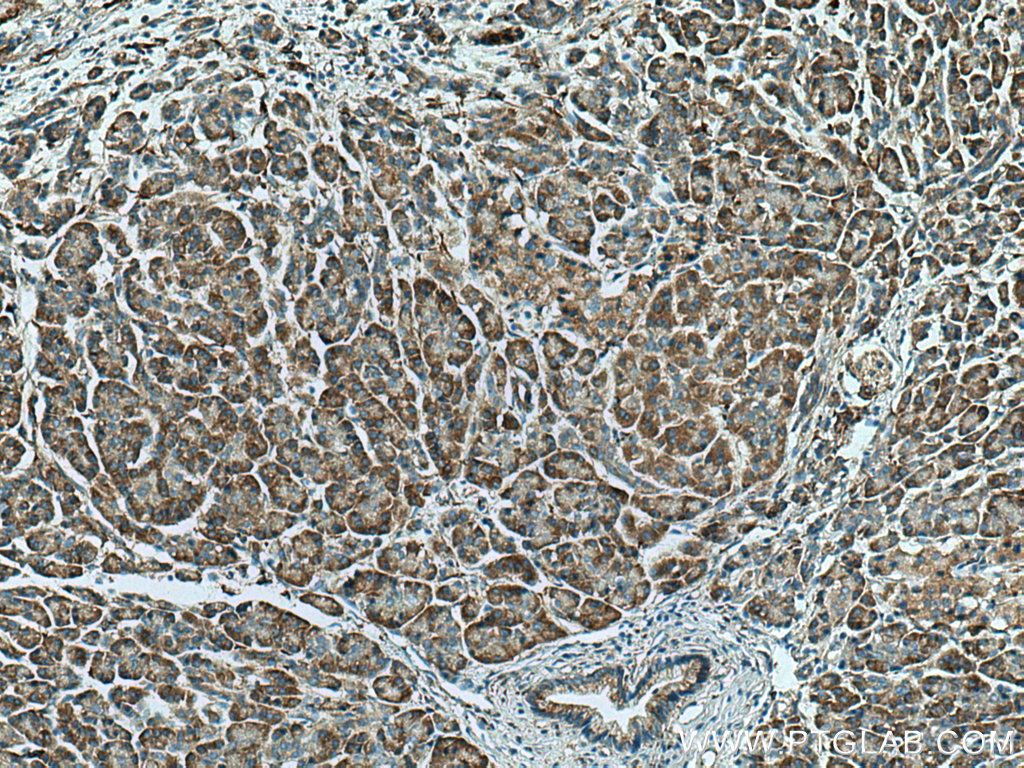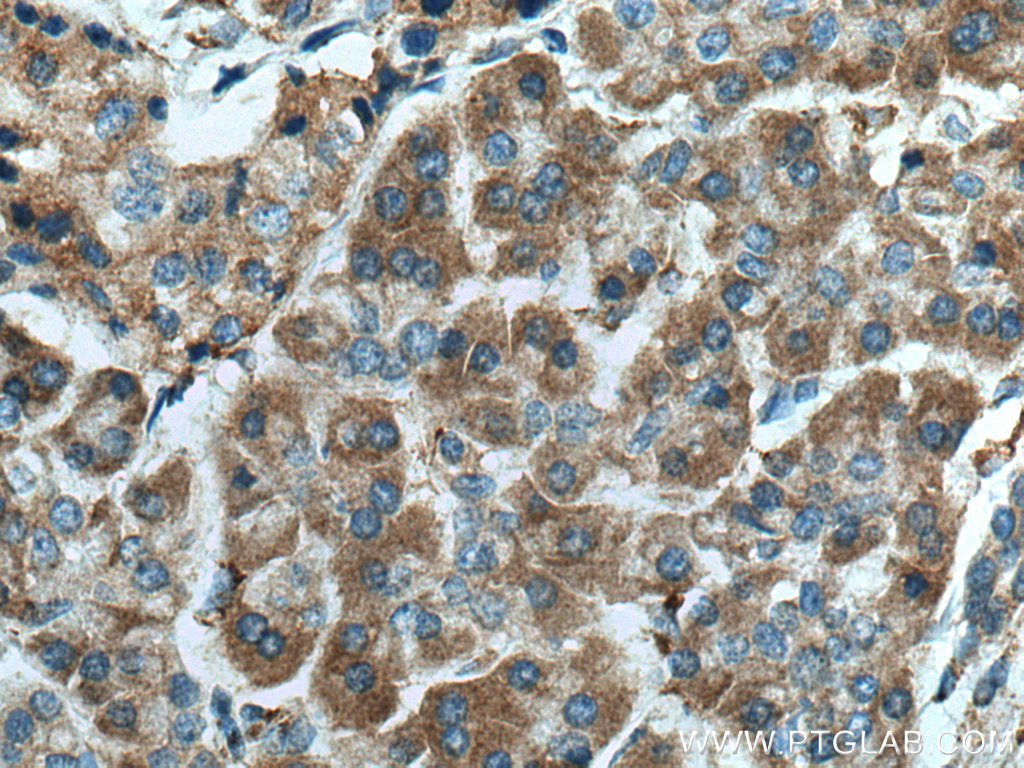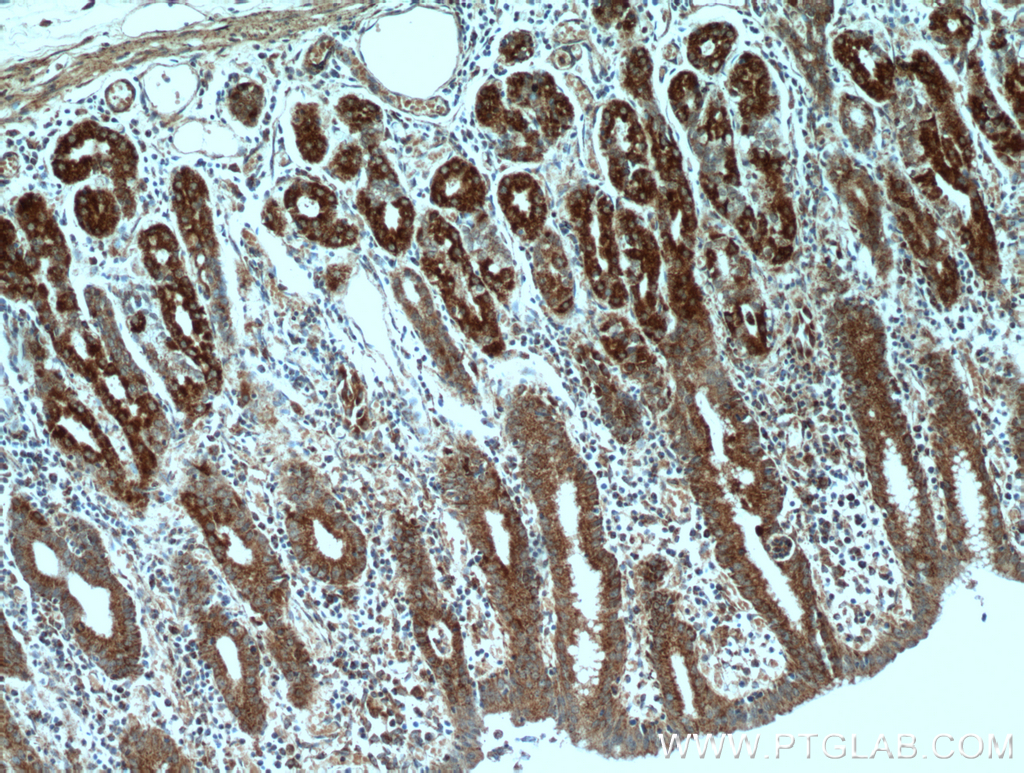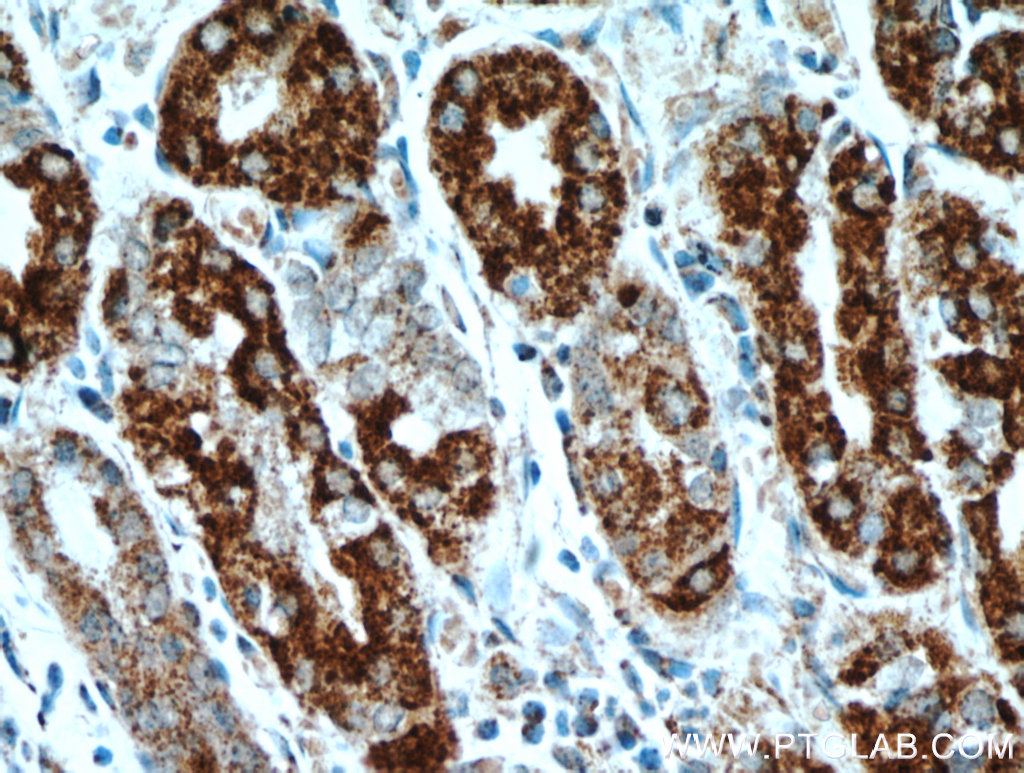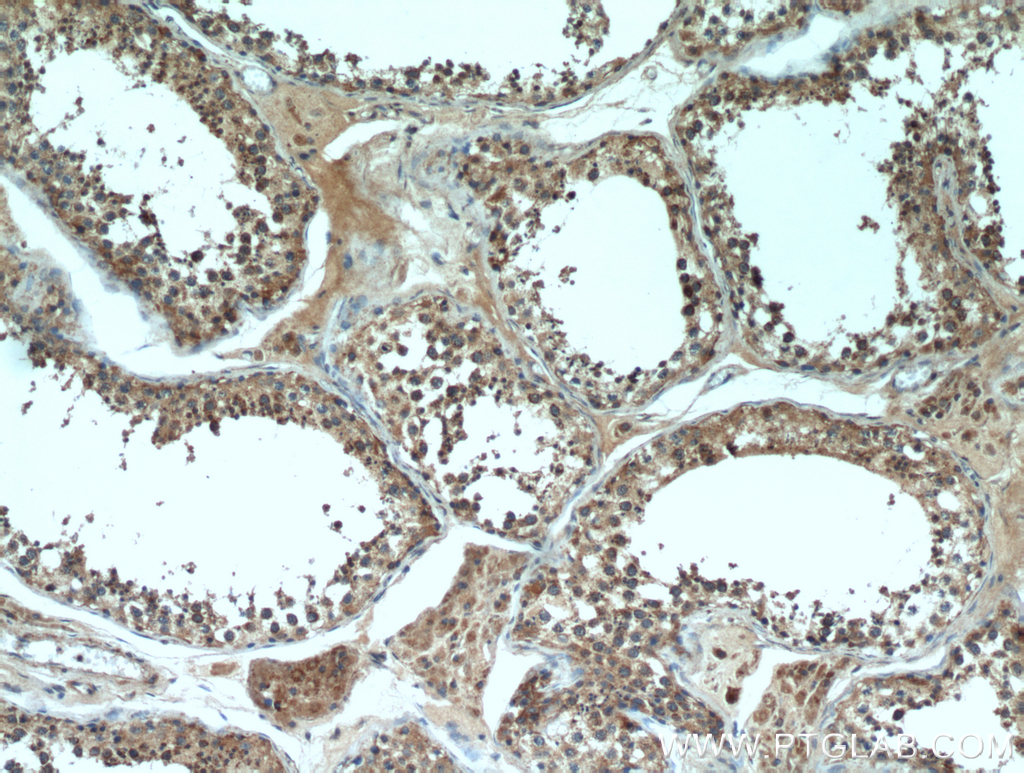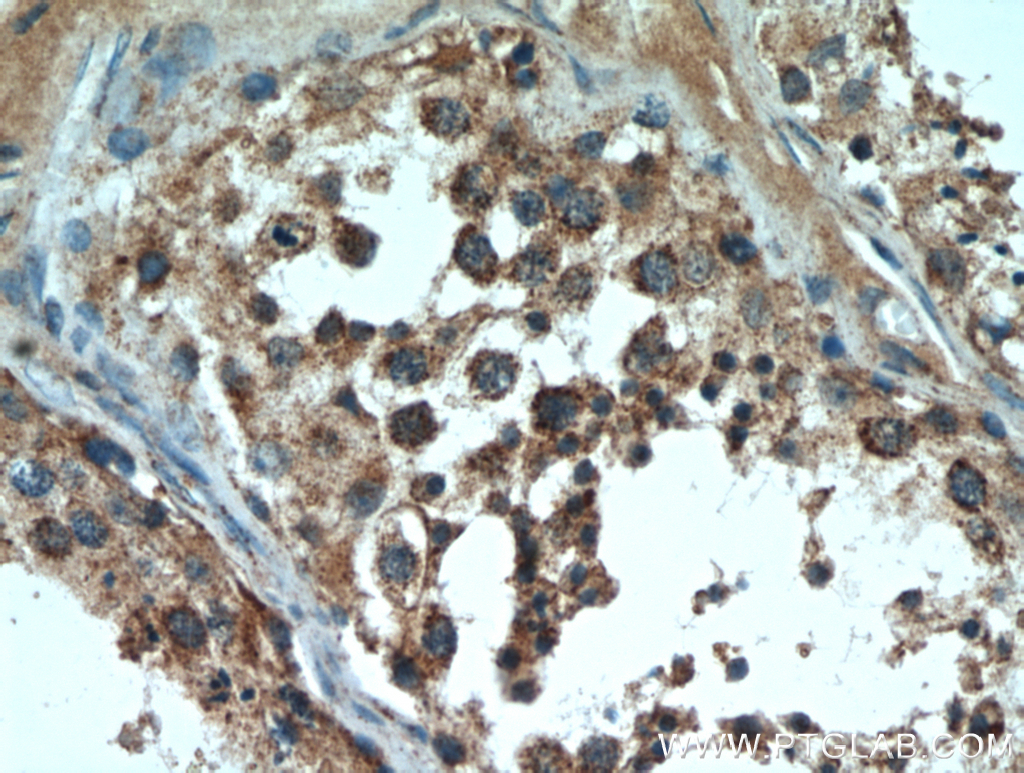- Featured Product
- KD/KO Validated
DNAJC10 Polyclonal antibody
DNAJC10 Polyclonal Antibody for IF/ICC, IHC, IP, WB,ELISA
Host / Isotype
Rabbit / IgG
Reactivity
human, mouse, rat
Applications
IF/ICC, IHC, IP, WB,ELISA and More (1)
Conjugate
Unconjugated
验证数据展示
经过测试的应用
| Positive WB detected in | HeLa cells, HepG2 cells, mouse liver tissue |
| Positive IP detected in | HeLa cells |
| Positive IHC detected in | human pancreas cancer tissue, human stomach tissue, human testis tissue Note: suggested antigen retrieval with TE buffer pH 9.0; (*) Alternatively, antigen retrieval may be performed with citrate buffer pH 6.0 |
| Positive IF detected in | HeLa cells |
推荐稀释比
| Application | Dilution |
|---|---|
| Western Blot (WB) | WB : 1:2000-1:10000 |
| Immunoprecipitation (IP) | IP : 0.5-4.0 ug for 1.0-3.0 mg of total protein lysate |
| Immunohistochemistry (IHC) | IHC : 1:500-1:2000 |
| Immunofluorescence (IF) | IF : 1:50-1:500 |
| It is recommended that this reagent should be titrated in each testing system to obtain optimal results. | |
| Sample-dependent, Check data in validation data gallery. | |
产品信息
13101-1-AP targets DNAJC10 in WB, IP, IF, IHC, CoIP, ELISA applications and shows reactivity with human, mouse, rat samples.
| Tested Applications | IF/ICC, IHC, IP, WB,ELISA |
| Cited Applications | WB, IF, IHC, CoIP |
| Tested Reactivity | human, mouse, rat |
| Cited Reactivity | human, rat |
| Immunogen | DNAJC10 fusion protein Ag3737 种属同源性预测 |
| Host / Isotype | Rabbit / IgG |
| Class | Polyclonal |
| Type | Antibody |
| Full Name | DnaJ (Hsp40) homolog, subfamily C, member 10 |
| Synonyms | DNAJC10, ER resident protein ERdj5, ERdj5, JPDI, Macrothioredoxin, MTHr |
| Calculated Molecular Weight | 793 aa, 91 kDa |
| Observed Molecular Weight | 80-90 kDa |
| GenBank Accession Number | BC034713 |
| Gene Symbol | DNAJC10 |
| Gene ID (NCBI) | 54431 |
| RRID | AB_10638440 |
| Conjugate | Unconjugated |
| Form | Liquid |
| Purification Method | Antigen affinity purification |
| UNIPROT ID | Q8IXB1 |
| Storage Buffer | PBS with 0.02% sodium azide and 50% glycerol pH 7.3. |
| Storage Conditions | Store at -20°C. Stable for one year after shipment. Aliquoting is unnecessary for -20oC storage. |
背景介绍
实验方案
| Product Specific Protocols | |
|---|---|
| WB protocol for DNAJC10 antibody 13101-1-AP | Download protocol |
| IHC protocol for DNAJC10 antibody 13101-1-AP | Download protocol |
| IF protocol for DNAJC10 antibody 13101-1-AP | Download protocol |
| IP protocol for DNAJC10 antibody 13101-1-AP | Download protocol |
| Standard Protocols | |
|---|---|
| Click here to view our Standard Protocols |
发表文章
| Species | Application | Title |
|---|---|---|
PLoS Pathog A cytosolic chaperone complexes with dynamic membrane J-proteins and mobilizes a nonenveloped virus out of the endoplasmic reticulum. | ||
Mol Cell Proteomics Thyroglobulin Interactome Profiling Defines Altered Proteostasis Topology Associated With Thyroid Dyshormonogenesis | ||
Diabetes Unbiased Profiling of the Human Proinsulin Biosynthetic Interaction Network Reveals a Role For Peroxiredoxin 4 in Proinsulin Folding. | ||
Mol Cell Proteomics Thyroglobulin Interactome Profiling Defines Altered Proteostasis Topology Associated With Thyroid Dyshormonogenesis. | ||
Cell Stress Chaperones Amyotrophic lateral sclerosis (ALS) and Alzheimer's disease (AD) are characterised by differential activation of ER stress pathways: focus on UPR target genes. |
